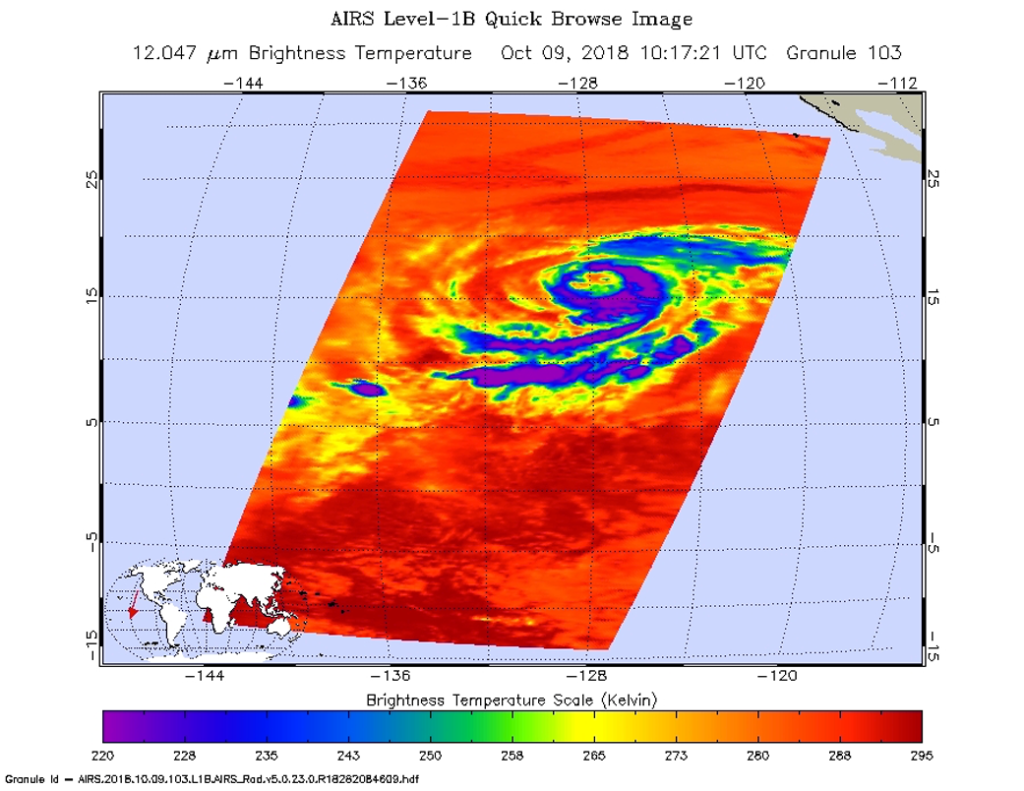Oct. 09, 2018 – NASA Checks Out Hurricane Sergio’s Cloud Temperature
NASA’s Aqua satellite peered into Hurricane Sergio with infrared light to determine if the storm was intensifying or weakening. Infrared data showed cloud top temperatures were getting warmer on the western half of the storm, indicating the uplift of air in storms had weakened.

The Atmospheric Infrared Sounder or AIRS instrument aboard NASA’s Aqua satellite passed over Hurricane Sergio on Oct. 9 at 6:17 a.m. EDT (1017 UTC). AIRS uses infrared light and infrared light provides scientists with temperature data and that’s important when trying to understand how strong storms can be. The higher the cloud tops, the colder and the stronger they are. So infrared light as that gathered by the AIRS instrument can identify the strongest areas of a tropical cyclone.
At the time Aqua passed overhead, coldest cloud top temperatures in thunderstorms circled the eye and appeared in fragmented bands of thunderstorms north and south of the center. Those temperatures were as cold as or colder than minus 63 degrees Fahrenheit (minus 53 degrees Celsius). The exception was on the western side of the storm, where cloud top temperatures were warming, meaning they were not getting as high in the atmosphere.
Despite the slow weakening the hurricane still has a large but well-defined inner-core in the low and mid-levels.
The National Hurricane Center noted at 11 a.m. EDT (1500 UTC), the center of Hurricane Sergio was located near latitude 16.6 degrees north and longitude 127.4 degrees west. That’s 1,215 miles (1,960 km) west-southwest of the southern tip of Baja California, Mexico.
Sergio is moving toward the northeast near 7 mph (11 kph). A faster northeastward motion is expected for the next several days. Maximum sustained winds have decreased to near 80 mph (130 kph) with higher gusts. Gradual weakening is anticipated during the next several days.
NHC noted that there are no coastal watches or warnings in effect, but interests in Baja California Sur should monitor the progress of Sergio.
More information about AIRS can be found at airs.jpl.nasa.gov
For updated forecasts, visit: www.nhc.noaa.gov
By Rob Gutro
NASA’s Goddard Space Flight Center
